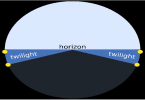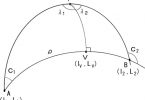Tests on Anchor cables:
Tensile Breaking Load Tests-
- The number of samples to be taken from lengths of the same grade and diameter presented for testing at one time depends on the method of manufacture of that grade of anchor.
- Such tests shall be carried out in the following manner:
(a) A piece of 3 links shall be selected by the Supervisor of Tests and cut from the cable, and the sample so obtained shall be subjected to the tensile breaking load (which depends on the diameter, grade and chain cable link type).
(b) If after application of such a test load the sample is unbroken and in the opinion of the Supervisor of Tests is without material flaw or other defect, such sample shall be deemed to have satisfactorily withstood the tensile breaking load.
(c) If the selected sample fails to withstand satisfactorily the appropriate tensile breaking load the Supervisor of Tests shall select another sample of 3 links from the same length of chain cable, as that from which the first sample was taken, and it shall be tested in the manner specified in subparagraphs (a) and (b). - If either the first or second of the 3 link samples withstands satisfactorily the tensile breaking load, each of the lengths which the test sample or samples represent shall be deemed to have passed the tensile breaking load test.
- (a) If both the first and second of the selected 3 link samples fail to withstand satisfactorily the tensile breaking load, the length from which the samples were taken shall be rejected and no further testing shall be undertaken upon it.
(b) If required by the person on whose behalf the tests are being carried out, tests may be continued upon any remaining lengths which the test samples represented (if any); in such case each remaining length shall be subjected to tests in accordance with paragraph 2, and if either the first or second of any 3 link samples selected withstands satisfactorily the appropriate tensile breaking load, that length shall be deemed to have passed the tensile breaking load test. - Where the required tensile breaking load is in excess of 650 tonnes the Director may permit in lieu of the application of the tensile breaking load test specified above such alternative method of testing the tensile breaking load of the material of the selected sample piece as is at least as effective.
Tensile Proof Load Test-
- When satisfactory tensile breaking load tests have been made on samples representing any length of chain cable the Supervisor of Tests shall then test every such length separately by subjecting it to the tensile proof load (which depends on the diameter, grade and chain cable link type).
- The chain cable shall be deemed to have passed such test, if after the application of the test it is, in the opinion of the Supervisor of Tests, without material deformation, flaw or weakness.
Mechanical Tests-
- Two mechanical tests-
(a) to determine the ultimate tensile strength and related elongation, and
(b) to determine the impact value,
of the material from which the chain cable is manufactured, shall be carried out on one sample in the case of the test at (a) and on one sample which shall be cut into 3 specimens in the case of the test at (b), taken at places selected by the Supervisor of Tests from every 4 or less lengths of Grade 3 cable of the same diameter presented for testing at one time. The samples shall be deemed to have passed the tests if the tests show that the material continues to be within the limits of mechanical properties set out for Grade 3 cable in Schedule 2. - If the sample fails in the case of test (a) or test (b) a further sample or samples as the case may be shall be selected by the Supervisor of Tests from the same 4 lengths or less as those from which the first samples were taken, and they shall be tested in the manner specified in paragraph 1.
- The lengths represented by the samples shall be deemed to have passed the mechanical tests if the samples referred to in (1) and (2) have passed both the test at (a) and the test at (b).







